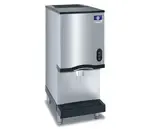
On-Premise vs. Off-Premise for Restaurants: Pros and Cons Explained
- What is On-Premise Dining?
- What is Off-Premise Dining?
- What’s the Difference between On-Premise vs. Off-Premise for Restaurants?
- To Wrap Up!
- Learn More
- FAQ
- What is an example of off-premise?
- What is an example of on-premise?
- Can a restaurant offer both off-premise and on-premise dining options?
- How can one promote off-premise dining services?
- What factors should one consider when deciding between off-premise and on-premise dining?
- How does on-premise dining impact customer satisfaction?
When it comes to running a restaurant, one of the most crucial decisions you'll have to make is whether to focus on on-premise or off-premise dining. Understanding the differences between these two approaches is essential for making an informed decision that aligns with your restaurant's goals and target customers. In this comprehensive guide, we will delve into the pros and cons of on-premise and off-premise dining to help you determine which option is best suited for your restaurant.
What is On-Premise Dining?
On-premise dining refers to the traditional model where customers visit your physical establishment to enjoy a meal. It provides a complete dining experience, including social interactions, a carefully curated atmosphere, and professional service. On-premise dining allows you to showcase your restaurant's ambiance, menu options, and hospitality. It is an ideal choice for special occasions, gatherings, and those seeking a memorable dining experience.
What is Off-Premise Dining?
Off-premise dining, also known as takeout, delivery, or catering, allows customers to enjoy restaurant-quality meals in a location of their choice. It provides convenience, flexibility, and broader reach by accommodating customers who prefer to dine at home, their office, or any other desired location.
What’s the Difference between On-Premise vs. Off-Premise for Restaurants?
In the dynamic world of the restaurant industry, one of the most critical choices restaurant owners face is deciding between on-premise and off-premise dining. This decision not only shapes the customer experience but also impacts operations and profitability. Understanding these differences is crucial for restaurant owners, managers, and entrepreneurs looking to make informed decisions about their dining operations. In this article, we take a detailed look at the pros and cons of on-premise and off-premise dining.

On-Premise: The Pros & Cons
On-premise dining, where customers enjoy meals within a physical establishment, offers a range of unique advantages and considerations for restaurant owners. Understanding the pros and cons of this dining approach is crucial for making informed decisions about your restaurant business.
Pros:
| Social Experience: One of the significant advantages of on-premise dining is the opportunity it provides for customers to socialize. The lively atmosphere and the presence of other diners create a vibrant and interactive experience. |
| Atmosphere: With on-premise dining, you have complete control over the ambiance. From the lighting to the music, you can curate a unique and memorable environment that aligns with your restaurant's concept. |
| Professional Service: When customers dine on-premise, they can benefit from the attentiveness and personalized service provided by your restaurant staff. Trained professionals can enhance the overall dining experience, ensuring that guests feel valued and well-cared for. |
| Menu Options: On-premise dining allows you to offer a diverse menu with a wide range of options to cater to various tastes and preferences. You can showcase your culinary expertise and creativity by curating an extensive selection of dishes. |
| Special Occasions: Celebratory events, such as birthdays, anniversaries, and corporate gatherings, are best suited for on-premise dining. The physical restaurant setting provides a suitable backdrop for creating memorable experiences during these special moments. |
Cons:
| Cost: Operating a physical restaurant involves higher costs compared to off-premise options. Rent, utilities, staff wages, and maintenance expenses can significantly impact profitability. |
| Time Constraints: Customers dining in a restaurant often have limited time, especially during busy periods. This may lead to potential time constraints for both customers and staff, affecting the overall dining experience. |
| Limited Control: On-premise dining requires meticulous planning and management to ensure consistent quality and service. Factors such as hiring & staff training, kitchen operations, and seating arrangements require careful attention to maintain high standards. |
| Lack of Privacy: While many customers enjoy the social atmosphere of on-premise dining, some may prefer a more intimate and private dining experience. It can be challenging to provide complete privacy in a bustling restaurant setting. |
| Inconsistent Experience: Despite the best efforts of restaurant owners and staff, on-premise dining experiences can vary. Factors such as staff performance, wait times, or unforeseen issues can lead to inconsistencies in customer experiences. |
Weigh the above pros and cons of on-premise dining to effectively assess the viability and implications of incorporating it into your restaurant's strategy, ensuring an exceptional dining experience for your customers.
Off-Premise: The Pros & Cons
Off-premise dining, including takeout, delivery, and catering services, has become increasingly popular in the restaurant industry. This dining option offers convenience and flexibility for customers, but it also presents unique considerations for restaurant owners, as discussed below.
Pros:
| Convenience: Off-premise dining offers customers the convenience of enjoying restaurant-quality food without leaving their preferred location. It caters to busy individuals, families, and those who prefer dining in the comfort of their own space. |
| Flexibility: With off-premise dining, customers can choose when and where they want to enjoy their meals. This flexibility is particularly valuable for those with hectic schedules or specific dietary preferences. |
| Safety and Health: Off-premise dining gained significant popularity during the COVID-19 pandemic. It provides a safer option for customers to enjoy meals without compromising their health or adhering to social distancing guidelines. |
| Increased Reach: By offering off-premise dining options, you can expand your customer base beyond those who visit your physical location. Delivery and takeout services allow you to reach customers in different neighborhoods or even outside your local area. |
| Cost Savings: Operating an off-premise dining model can result in cost savings compared to maintaining a full-scale restaurant. The overhead expenses, such as rent and utilities, can be reduced, leading to improved profitability. |
Cons:
| Food Quality and Presentation: Ensuring consistent food quality and presentation can be challenging when meals are prepared for delivery or takeout. Proper packaging and handling techniques are essential to maintain the integrity of the dishes. |
| Limited Atmosphere: Off-premise dining lacks the ambiance and social interactions found in on-premise dining. Some customers may miss the lively atmosphere and personal interactions that come with dining in a physical restaurant. |
| Delayed Service: Delivery or pickup times may vary, leading to potential delays that can affect customer satisfaction. Timely and efficient delivery logistics are crucial to ensure a positive experience for customers. |
| Potential Issues with Delivery: Delivery operations can be complex, and issues such as incorrect orders, delays, or mishandling can occur. Addressing these potential problems promptly and efficiently is crucial to maintain customer trust. |
| Limited Menu Options: Some dishes may not be suitable for off-premise dining due to factors like preparation requirements or the need for immediate consumption. Offering a streamlined menu that travels well is essential for maintaining food quality and customer satisfaction. |

To Wrap Up!
Choosing between on-premise and off-premise dining options requires careful consideration of various factors, including your target audience, restaurant concept, location, operational capabilities, and market demand. On-premise dining offers a social and immersive experience, where you have control over the ambiance and service. It is ideal for special occasions and customers seeking a complete dining experience. On the other hand, off-premise dining provides convenience, flexibility, and increased reach, catering to busy individuals and those who prefer dining in their own space.
By assessing the pros and cons of each approach and considering your restaurant's unique circumstances, you can make an informed decision that aligns with your goals and target audience.
Learn More
We hope this comprehensive guide has provided valuable insights into the differences between on-premise and off-premise dining for restaurants. If you're interested in exploring more articles related to restaurant management, operational strategies, and industry trends, we invite you to check out the following resources:
- Learn how to open a restaurant business with our informative guide, which provides step-by-step instructions and valuable tips to help you establish a successful restaurant venture.
- Discover essential food delivery equipment for ensuring ultimate customer satisfaction. This article highlights the necessary supplies and equipment to optimize your off-premise dining services.
- Gain insights into creating a memorable restaurant design by reading our article on designing a memorable restaurant. Learn how to craft an ambiance that captivates customers and leaves a lasting impression.
Visit our blog to access these resources and further enhance your knowledge, enabling you to make informed decisions and optimize your restaurant business.
FAQ
What is an example of off-premise?
An example of off-premise dining includes ordering food for delivery or arranging for catering services for events or gatherings. For instance, individuals or businesses may order meals from a restaurant to be delivered to their home or office, or they may hire a catering service to provide food for a special occasion or corporate event.
What is an example of on-premise?
An example of on-premise dining is when customers visit a physical restaurant to enjoy a meal and dine in. They can immerse themselves in the restaurant's atmosphere, interact with the staff, and experience the ambiance and service firsthand.
Can a restaurant offer both off-premise and on-premise dining options?
Yes, many restaurants successfully offer both off-premise and on-premise dining options to cater to different customer preferences and needs. By providing the choice between dining in and enjoying the convenience of takeout or delivery, restaurants can appeal to a broader customer base and accommodate various dining occasions.
How can one promote off-premise dining services?
Promoting off-premise dining services requires strategic marketing techniques. To expand your reach, utilize online ordering platforms, such as partnering with popular delivery apps. Leverage social media promotions to showcase your off-premise options and engage with customers. Targeted advertisements can effectively reach customers searching for food delivery or takeout options. Consider partnerships with local delivery services to ensure reliable and efficient service. Highlight the convenience and safety of off-premise dining, appealing to busy individuals and health-conscious customers.
What factors should one consider when deciding between off-premise and on-premise dining?
Several factors influence the decision between off-premise and on-premise dining. Understand your target audience's preferences and needs. Evaluate how well your restaurant's concept aligns with each dining option. Consider the location and surrounding area, assessing the demand for off-premise dining. Evaluate your operational capabilities, including kitchen capacity and delivery logistics. Research customer preferences and analyze market demand to make an informed decision.
How does on-premise dining impact customer satisfaction?
On-premise dining significantly impacts customer satisfaction. It provides a complete dining experience, including personalized service and social interactions. The ambiance and atmosphere contribute to a pleasant dining experience. On-premise dining allows for direct engagement with restaurant staff, enhancing customer satisfaction through recommendations and attention to detail. The social aspect of dining in a restaurant adds value and creates a sense of community, contributing to overall customer satisfaction.





